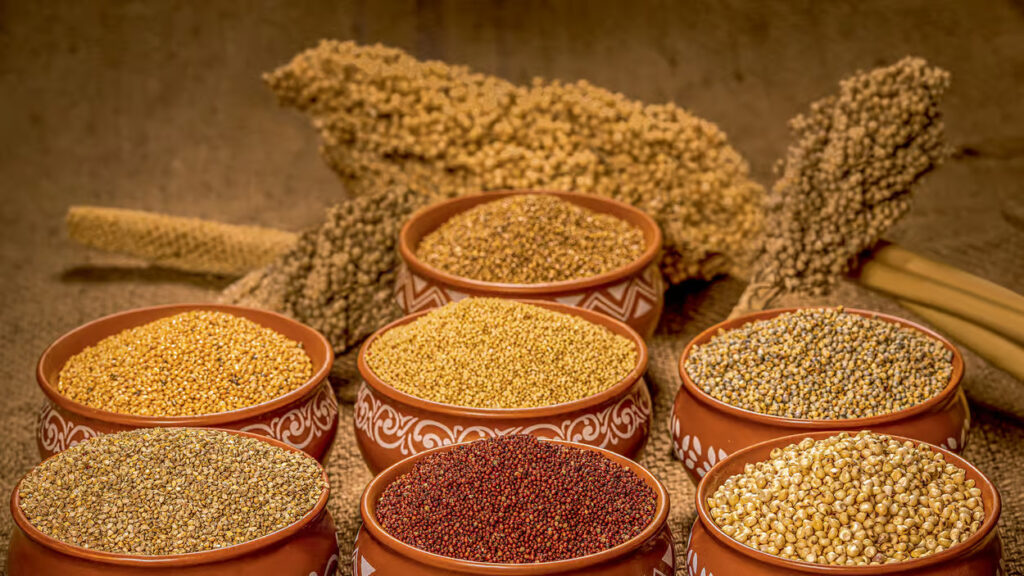Millet is a staple grain widely consumed in Asia and Africa, with around 1.2 billion people incorporating it into their diets. As one of the largest consumers of millet, India plays a significant role in the global production of this nutritious grain, contributing approximately 30.9 million tonnes annually. Millet’s resilience and nutritional value make it a crucial food source, especially in developing countries. In India, its popularity is growing, supported by government incentives and its adaptability to various climates.
Here are the top five major millets producing states in India:
Top 5 Millets Producing States in India
1. Rajasthan
Rajasthan leads as India’s top millet producer, contributing 27% of the nation’s total millet production. Despite its arid climate, the state’s farmers successfully grow a variety of millets, including Bajra (Pearl Millet). From the vast fields of the Thar Desert to the fertile plains of Mewar, Rajasthan’s dedication to millet cultivation is evident. This commitment has earned Rajasthan the distinction of being the Millet Master of India.
2. Karnataka
Karnataka ranks as the second-largest millet-producing state in India, contributing 18% to the country’s total millet production. The state promotes its millet products under the brand name Siridhanya, featuring varieties such as Ragi (Finger Millet), Navane (Foxtail Millet), Same (Little Millet), and Haruka (Kodo Millet). Key millet-growing areas in Karnataka include Koppal, Raichur, and Bellary. The state government actively supports millet farmers to boost production.
3. Maharashtra
Maharashtra contributes 14% to India’s millet production. The state grows various millets, including Nachani (Finger Millet) and Bajra, which are integral to local dishes like bhakri. Prominent millet-producing regions in Maharashtra include Sangli, Yavatmal, and Jalgaon. Government programs like RKVY assist farmers in enhancing millet cultivation. Maharashtra’s millets thrive in dry and rain-fed areas with varying soil fertility.
4. Uttar Pradesh
Uttar Pradesh produces 12% of India’s millets and actively supports millet farming. While rice and wheat dominate the state’s grain production, millets like Pearl Millet and Sorghum are also widely grown. These grains thrive in Uttar Pradesh’s challenging climatic and soil conditions, offering vital nutrition and fodder.
5. Madhya Pradesh
Madhya Pradesh contributes 6% to India’s millet production. Located centrally, the state benefits from adequate rainfall, making it suitable for millet cultivation. Key millet-growing regions in Madhya Pradesh include Dindori, Mandla, Umaria, Shahdol, Betul, and Chhindwara. Local consumption of millet is prevalent, reflecting its importance in the state’s daily diet.
In conclusion, these major millets producing states in India play a crucial role in meeting both domestic and international demands for millet. The Indian government’s various schemes support and promote millet production, underscoring its importance for a resilient and nutritious future.


